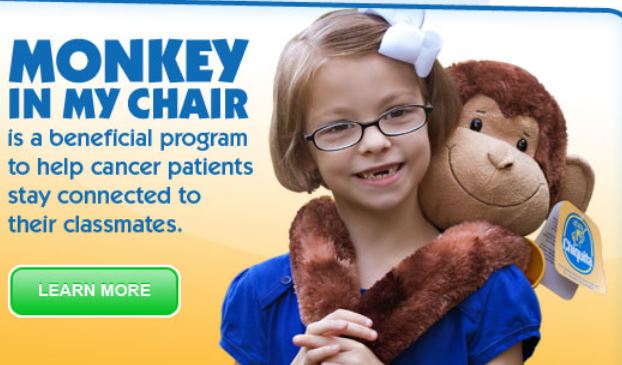With more schools and students trialling the Monkey, we are seeing a wide variety of different contexts where different issues are likely to arise. Some questions seem to arise predictably in almost every situation, and these are being compiled to include in a list of FAQ on this blog.
The Monkey was originally designed to support students having treatment for cancer. For these students, and for their families and schools, a diagnosis of cancer is generally sudden and shocking, and the Monkey is an emergency measure in an unforeseen crisis. However, a number of students involved in this project are dealing with chronic illness which has been present since before they started school. For these students, maintaining participation in the life of the class and the school is an issue which has usually been extensively discussed by their teachers and parents, and the Monkey is carefully considered and incorporated into a plan for support. It is possible that there will be significant differences in the role played by the Monkey for these two groups of students. It is also possible that lessons learned from the students with “pre-existing illness” can be used to develop guidelines for supporting students whose illness develops suddenly and with no time for preparation.
Social / academic connection
Most participants – kids, families and teachers – expect the Monkey to play a significant role in maintaining social connection to the classroom, and this is generally their primary purpose in seeking to have a Monkey. Most participants have so far been happy with the Monkey in this role. There is generally less emphasis on maintaining academic continuity or connection to learning. Although the Monkey comes with a backpack which can be used to collect and courier work materials between the kid and the classroom, it is more common for the couriered material to consist largely of friendly notes and cards. Different parties have had different perceptions of how effective the Monkey is in this regard, but they may perhaps have had different expectations at the outset. It would be worth clarifying those expectations beforehand, and building in an opportunity for this sort of discussion before the Monkey is delivered to the school.
Student “buy-in”
Many schools have recognised the importance of first consulting the student on whether or not the Monkey would be a helpful or desirable addition to the class. This is consistent with the recommendations of the Disability Standards for Education, and in keeping with the Healthy Schools Framework. Approaches have tended to vary after the Monkey is in place, with some differences around who “owns” the Monkey; this in turn has an effect on the naming of the Monkey, when and how the Monkey is introduced to the class, what happens to the Monkey when the child is back at school, etc. It is not clear yet whether this affects the Monkey’s role in maintaining connection between students and their classes.
Long-term
The broader aim of the effort to keep kids connected to school is to get better long-term outcomes for them. Return-to-school transitions were not initially part of this project. However, preliminary evidence suggests that, even with a Monkey, students returning to school after a long absence still experience significant frustration and anxiety. This issue warrants further investigation.
